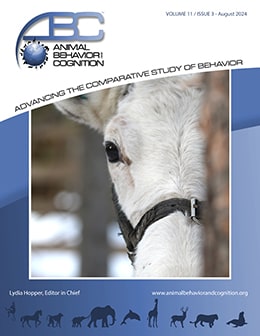Vol 11, Issue 3, August 2024
Enhancing Stress Assessment in Sledge Reindeer (Rangifer tarandus): A Pilot Study on Infrared Thermal Imaging and its Opportunities for Advancement as a Welfare Assessment Tool
Citation
Liehrmann, O., Ollila, A., Lummaa, V., Lansade, L., & Seltmann, M. W. (2024). Enhancing stress assessment in sledge reindeer (Rangifer tarandus): a pilot study on infrared thermal imaging and its opportunities for advancement as a welfare assessment tool. Animal Behavior and Cognition, 11(3), 293-304. https://doi.org/10.26451/abc.11.03.04.2024
Abstract
Measuring immediate physiological stress responses in animals can be challenging; saliva and blood sampling, while invasive, may also generate confounding stress responses, and equipping animals with heart rate sensors is not always feasible. Nevertheless, emerging technologies offer a non-invasive and contactless method to measure additional body surface temperature changes induced by acute stress, using infrared thermal measurement of the eye caruncle region. Contactless temperature measurement has the potential to assess the emotional state of animals affected by human physical contact. Reindeer, being highly sensitive to touch and naturally avoiding physical contact, exemplify this case. With growing interest in safari tours involving sledging reindeer, there is a need to investigate how these animals are affected by human interactions and how they adapt to daily close contact. In this pilot experiment, we evaluated the efficacy of thermal imaging in measuring medial canthus temperature fluctuations in non-habituated sledging reindeer while being petted by unfamiliar humans. Our findings support the hypothesis that medial canthus temperature significantly decreases during petting and increases once the interaction ceases, aligning with established stress response patterns found in the literature. This pilot experiment underscores the potential of infrared thermal imaging for non-invasively monitoring physiological responses to stress in tamed reindeer. Moreover, it sets the foundation for refining methodologies and experimental designs using infrared thermal imaging in animal welfare research.
Keywords
Infrared Thermal imaging, Emotion, Ungulates, Thermal camera, Eye temperature
